Abstract
1. In unanaesthetized cats a comparison is made of the hyperglycaemic effects of adrenaline and morphine, when injected or infused through chronically implanted cannulae, into different regions of the cerebral ventricles or of the subarachnoid space, in order to determine their sites of action. 2. On injection into the cerebral ventricles both adrenaline and morphine have to reach the subarachnoid space beneath the ventral surface of the brain stem before they can exert their hyperglycaemic effect. The adrenaline has to reach the region rostral to the pons, i.e. the fossa interpeduncularis, and the morphine the region caudal to the trapezoid bodies. These conclusions are based on the following findings. 3. When adrenaline (55 mug) and morphine (0-75mg) were infused into one or other of these two regions, adrenaline produced strong hyperglycaemia on infusion into the fossa interpeduncularis, but had scarcely any hyperglycaemic effect on infusion into the region caudal to the trapezoid bodies. The reverse result was obtained with morphine. 4. It is concluded that the adrenaline hyperglycaemia is mainly a peripheral effect. It occurs after the adrenaline has been absorbed into the blood stream from the fossa interpeduncularis but an additional central component, an action on brain stem structures reached from the fossa interpeduncularis, cannot be excluded. The morphine hyperglycaemia is a central effect due to an action on superficial structures of the ventral surface of the medulla oblongata, caudal to the trapezoid bodies.
Full text
PDF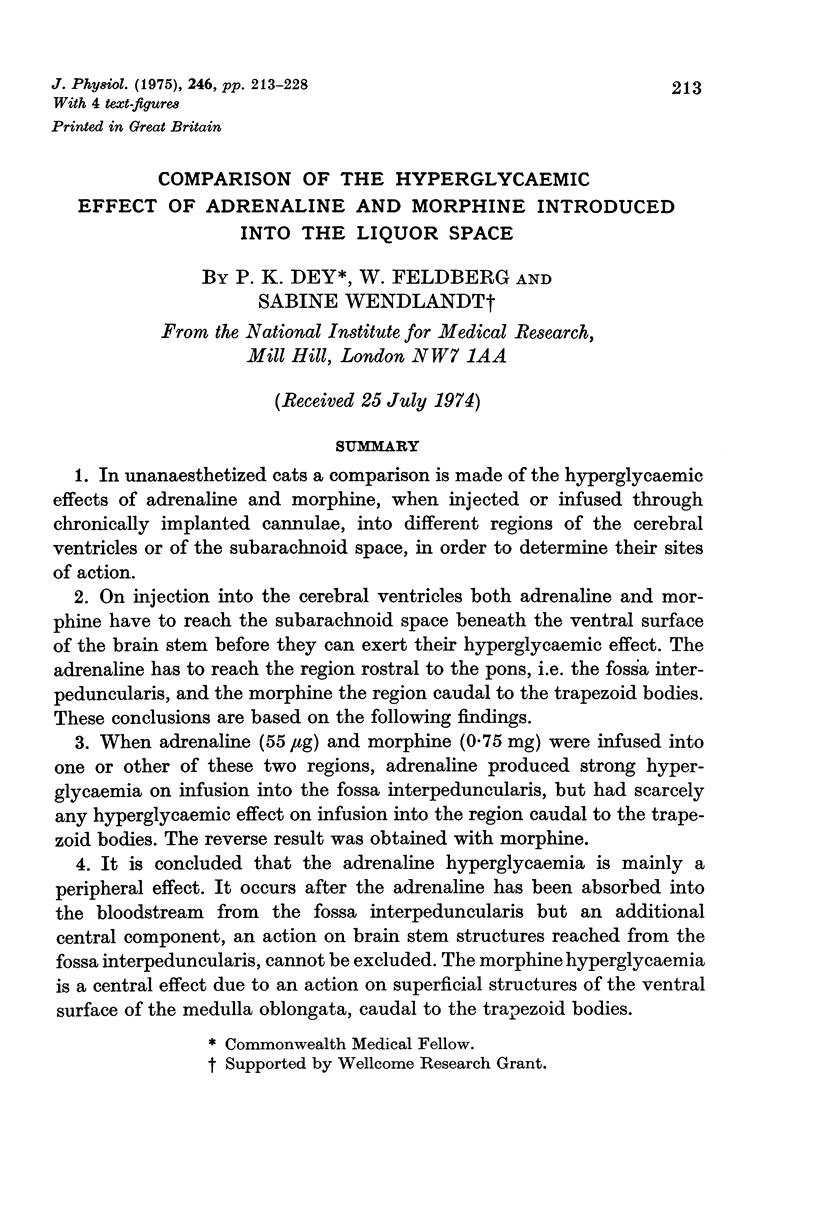
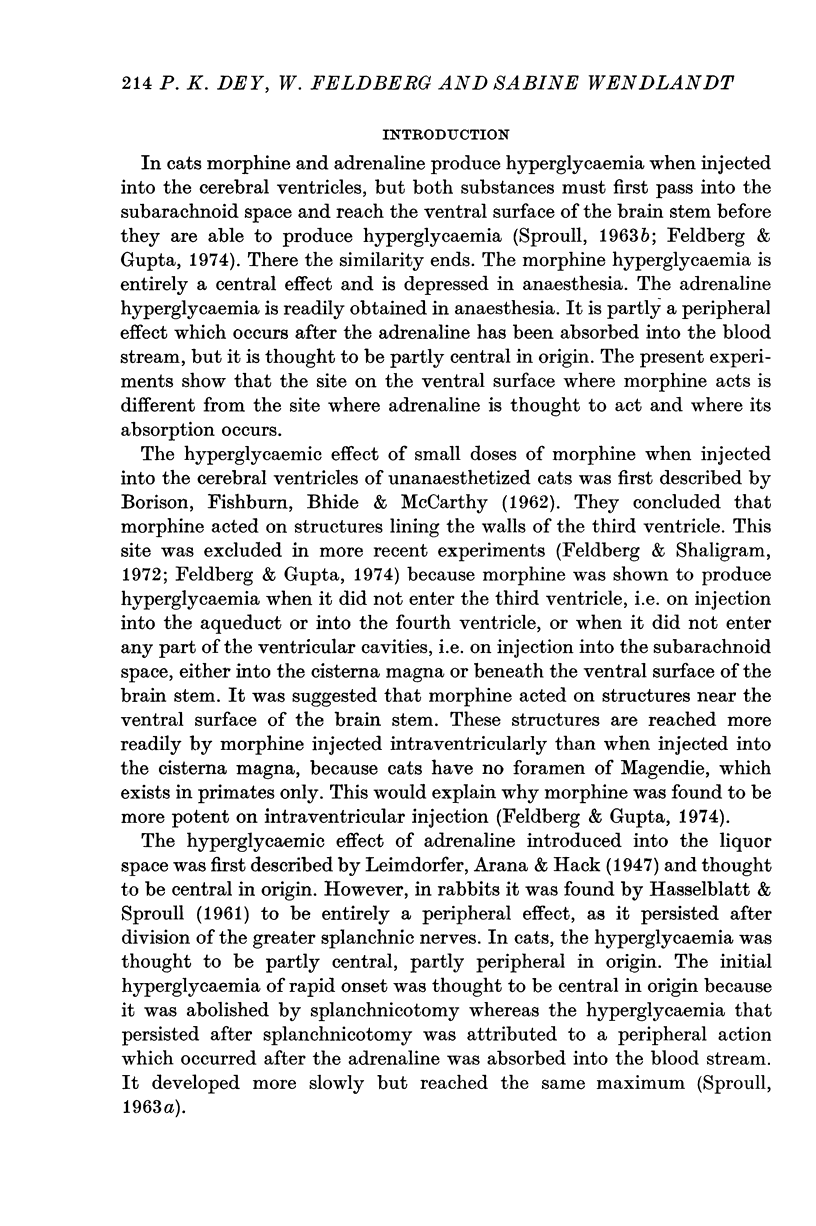
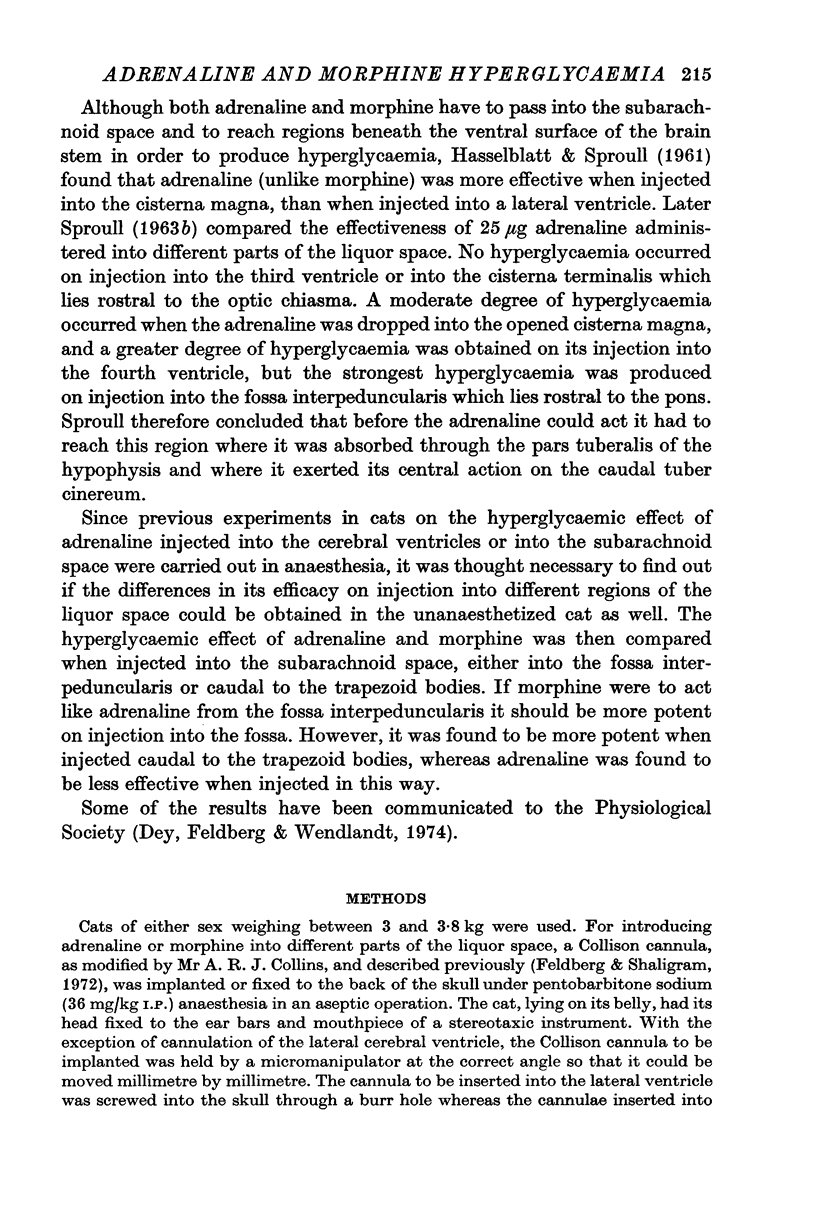
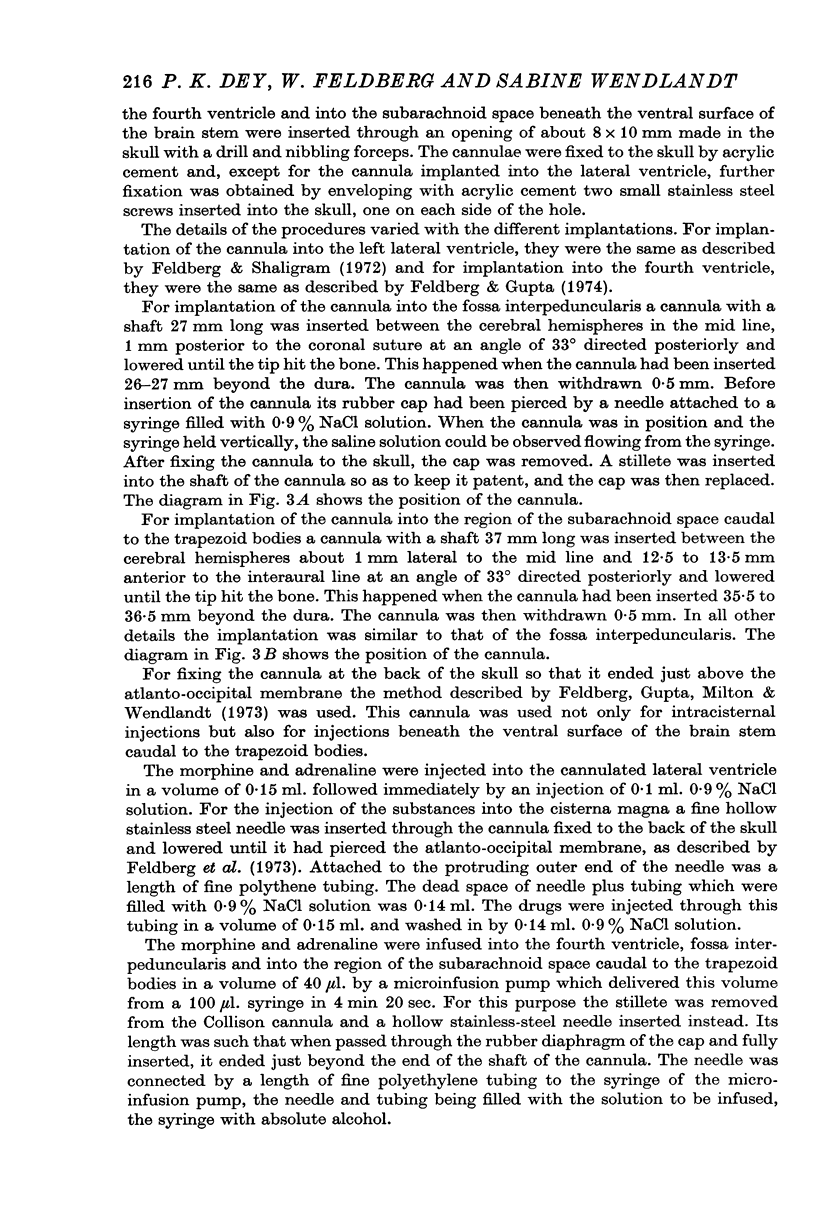
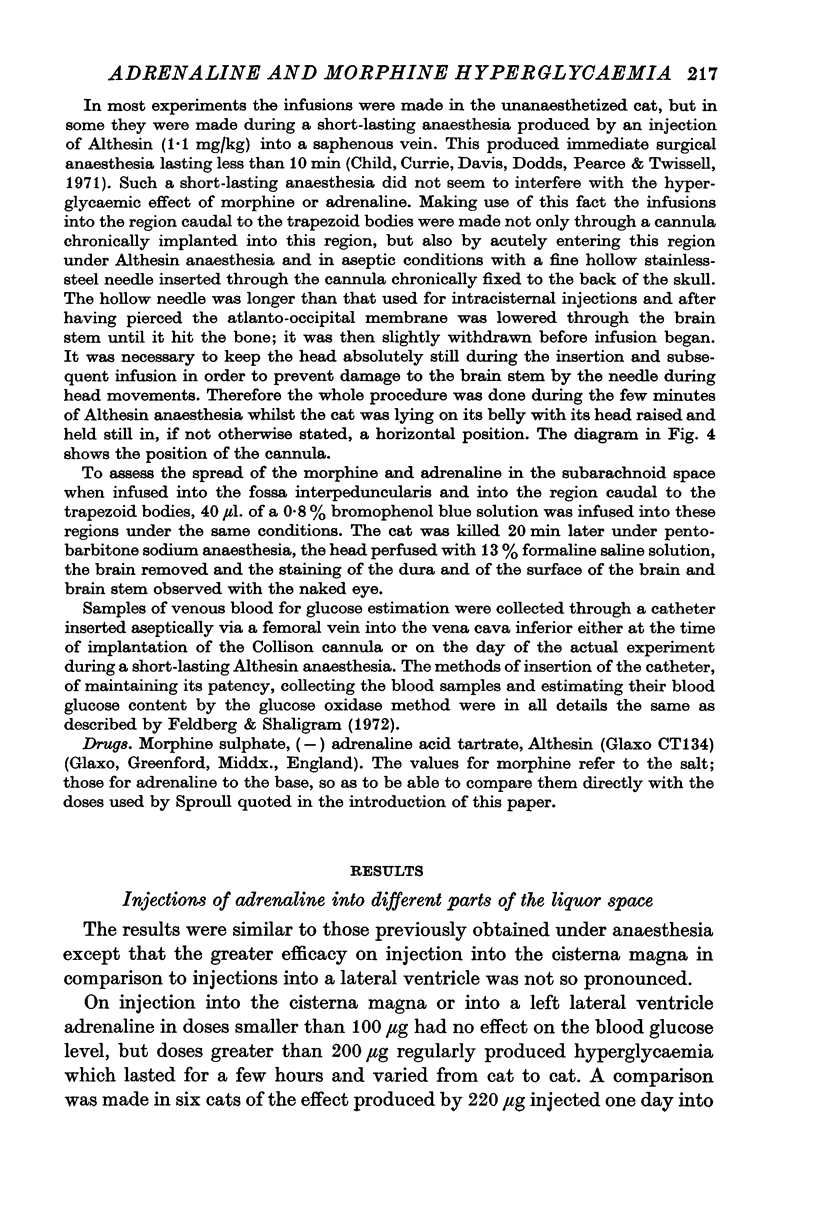
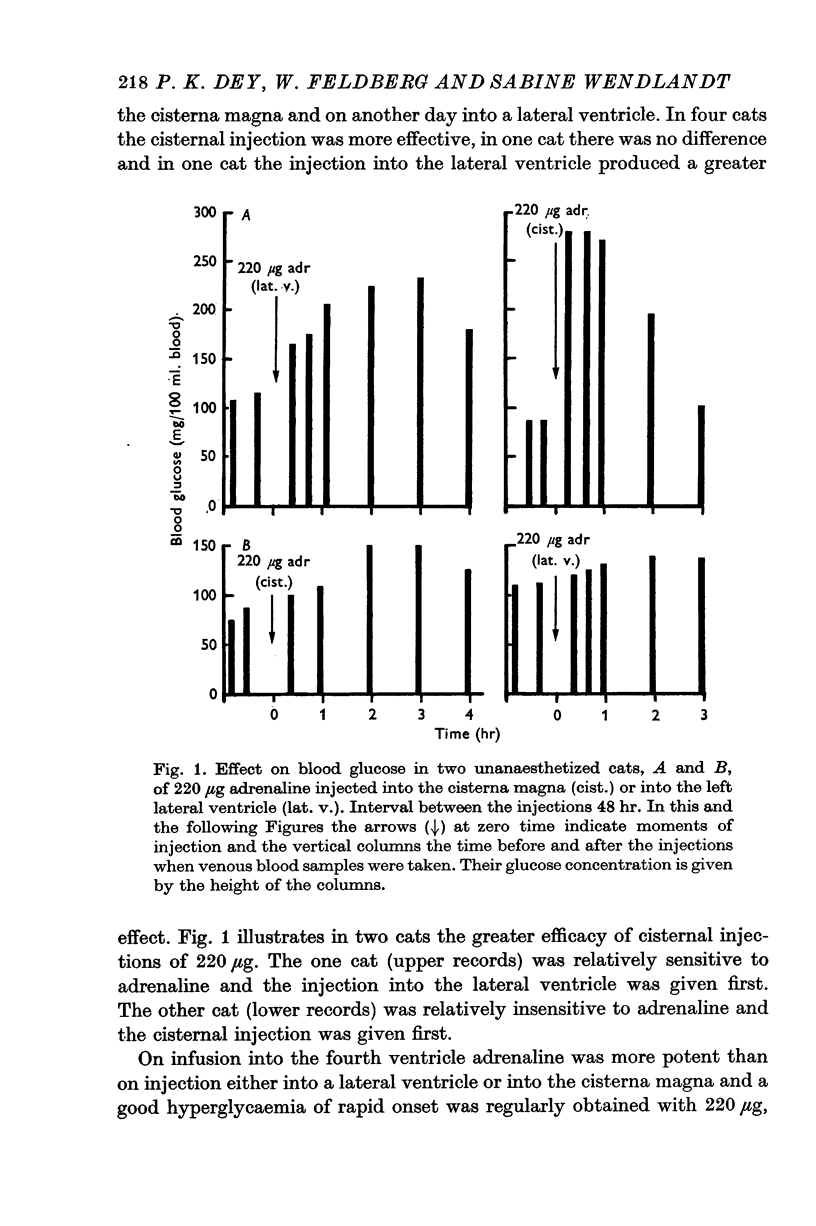
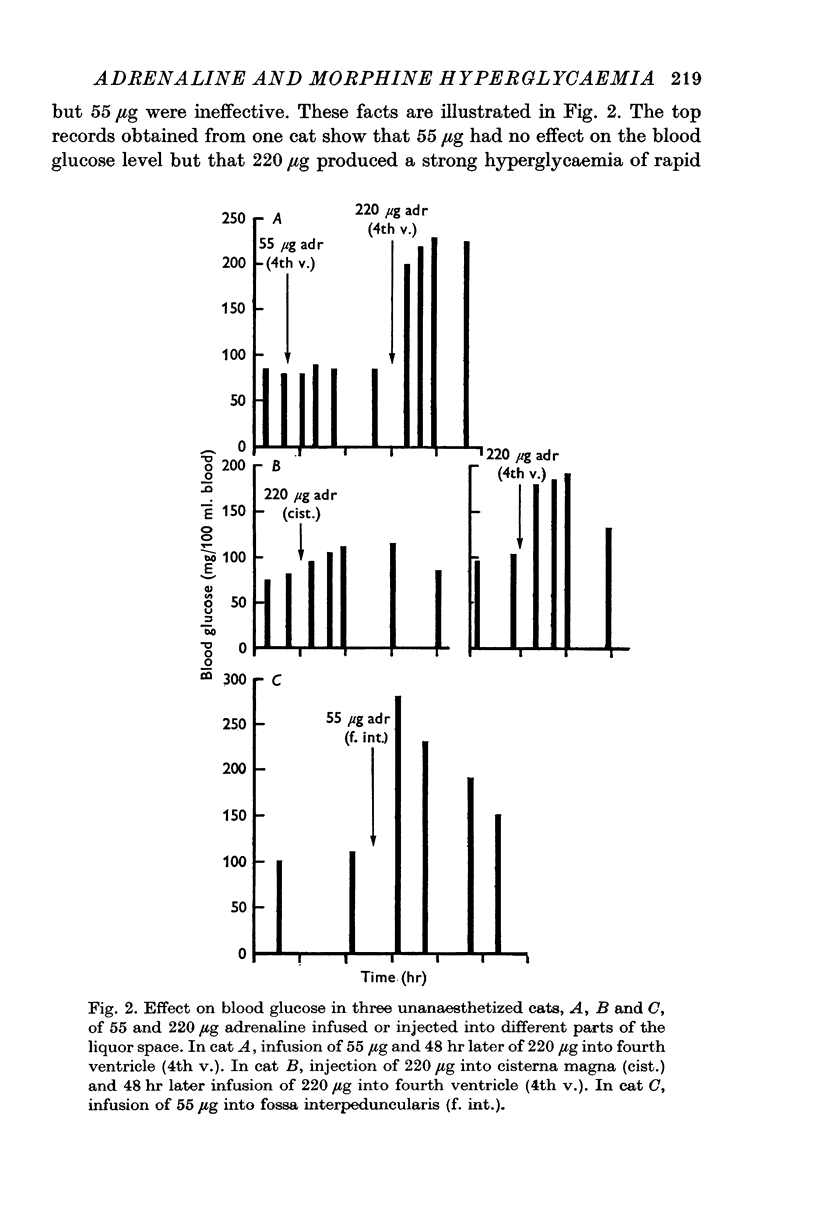
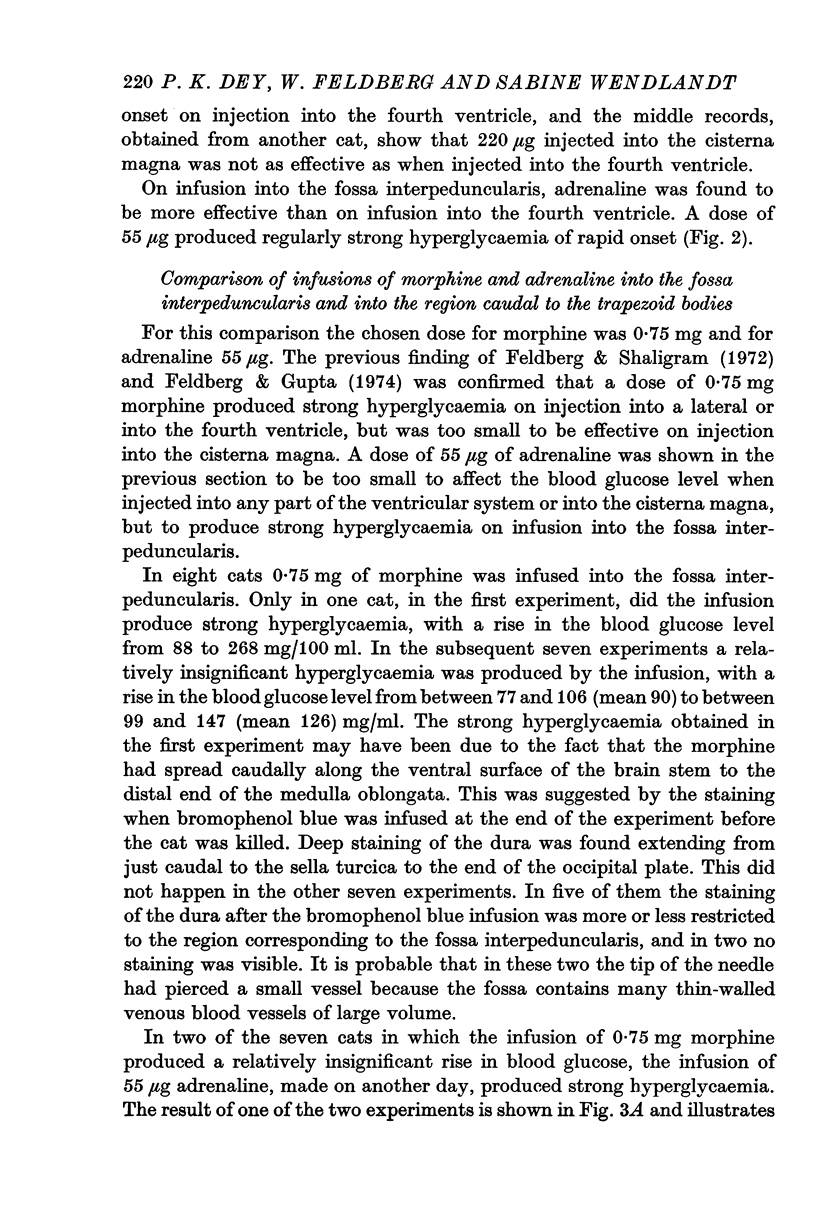
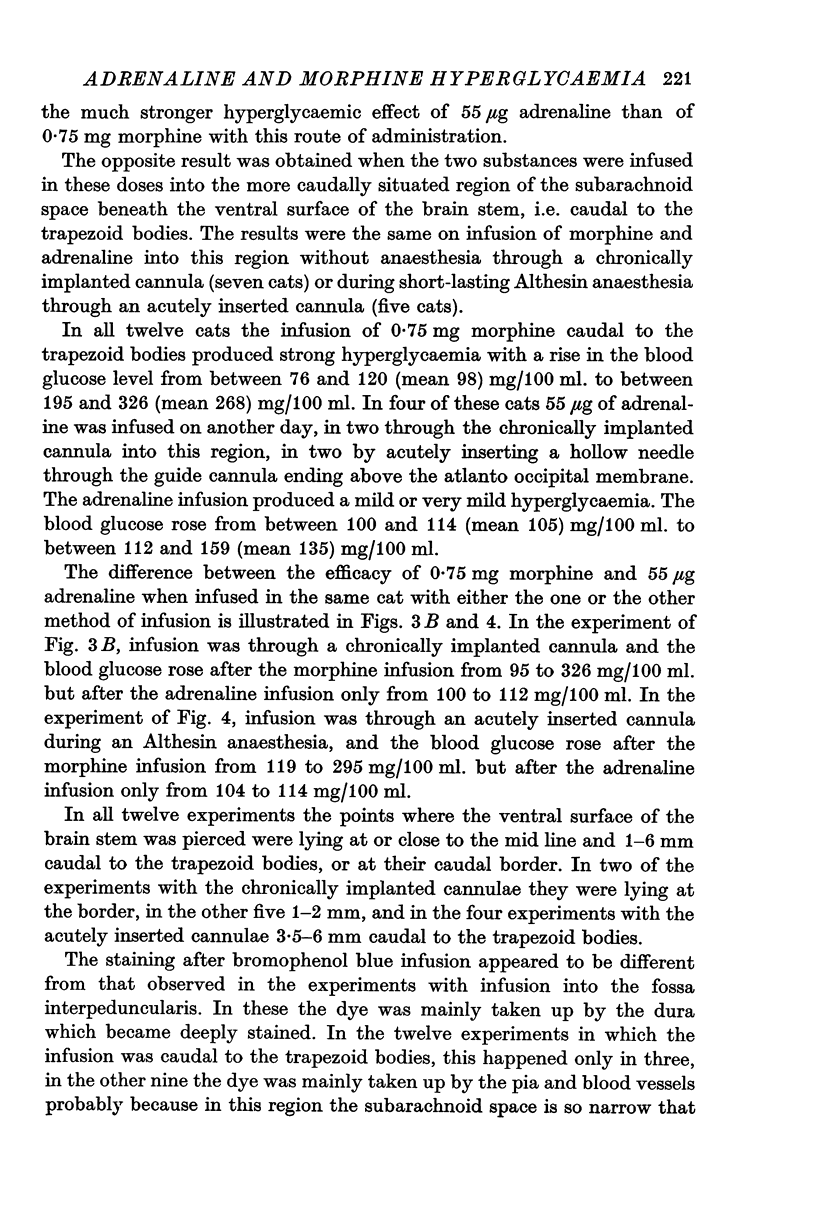
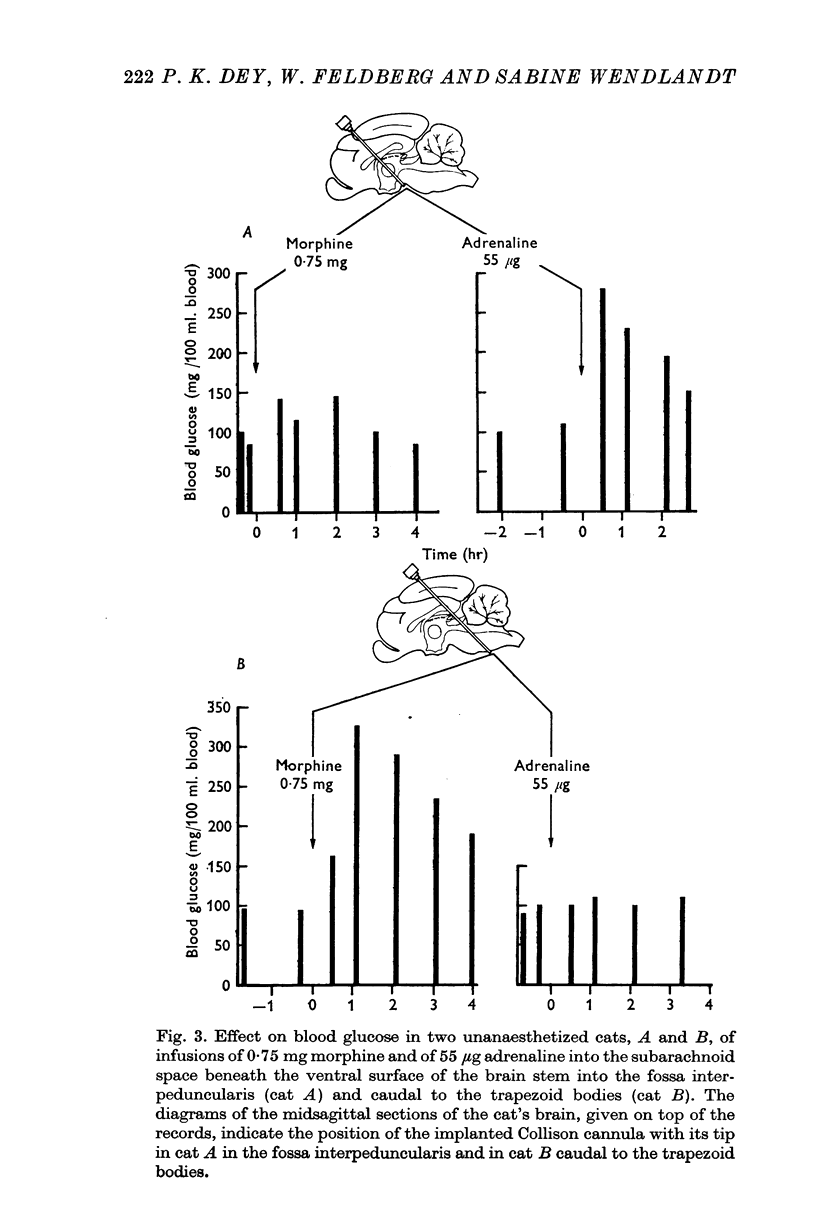
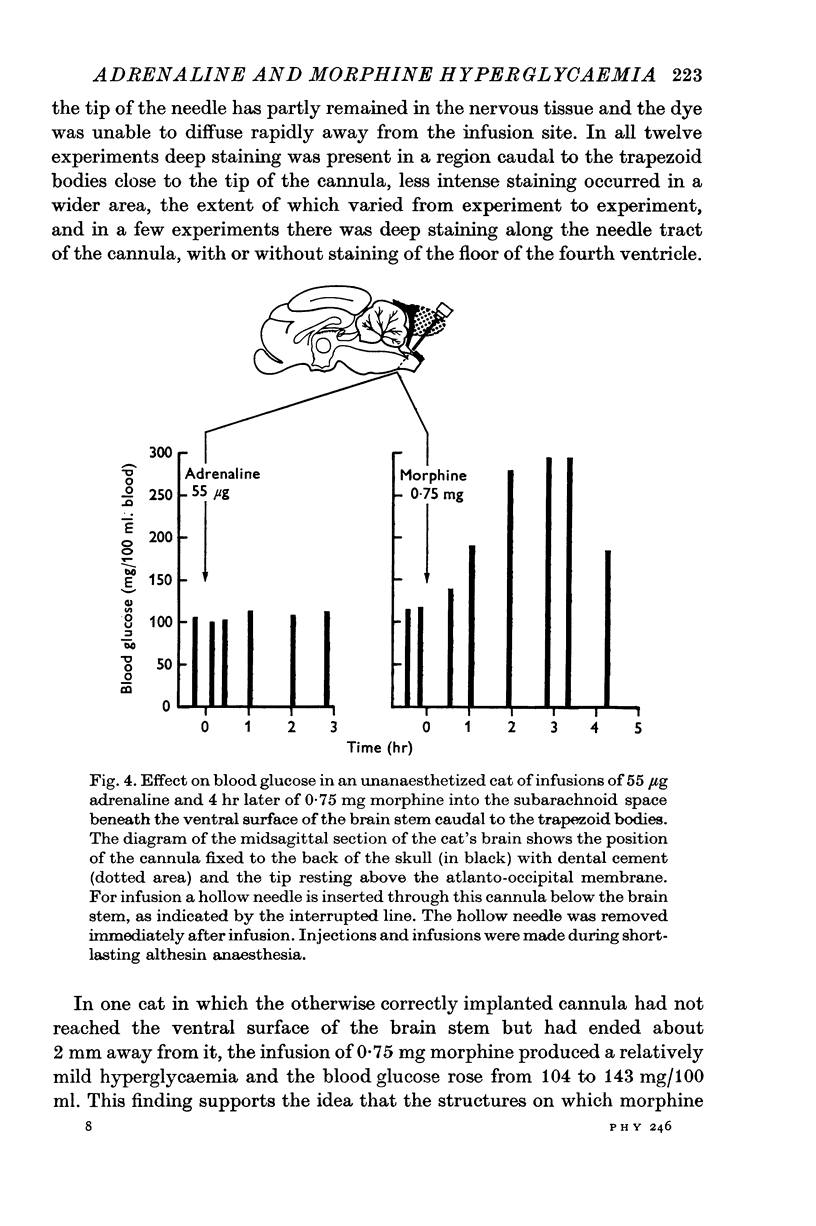
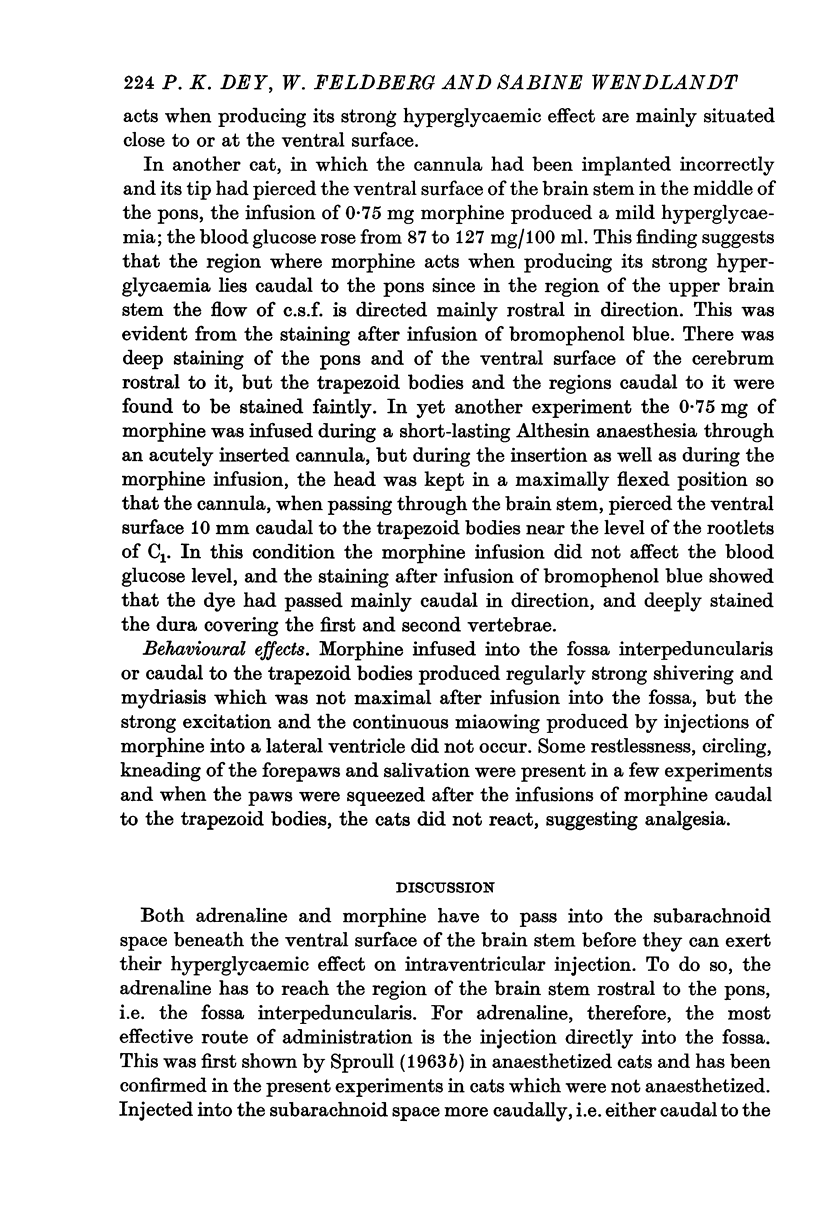
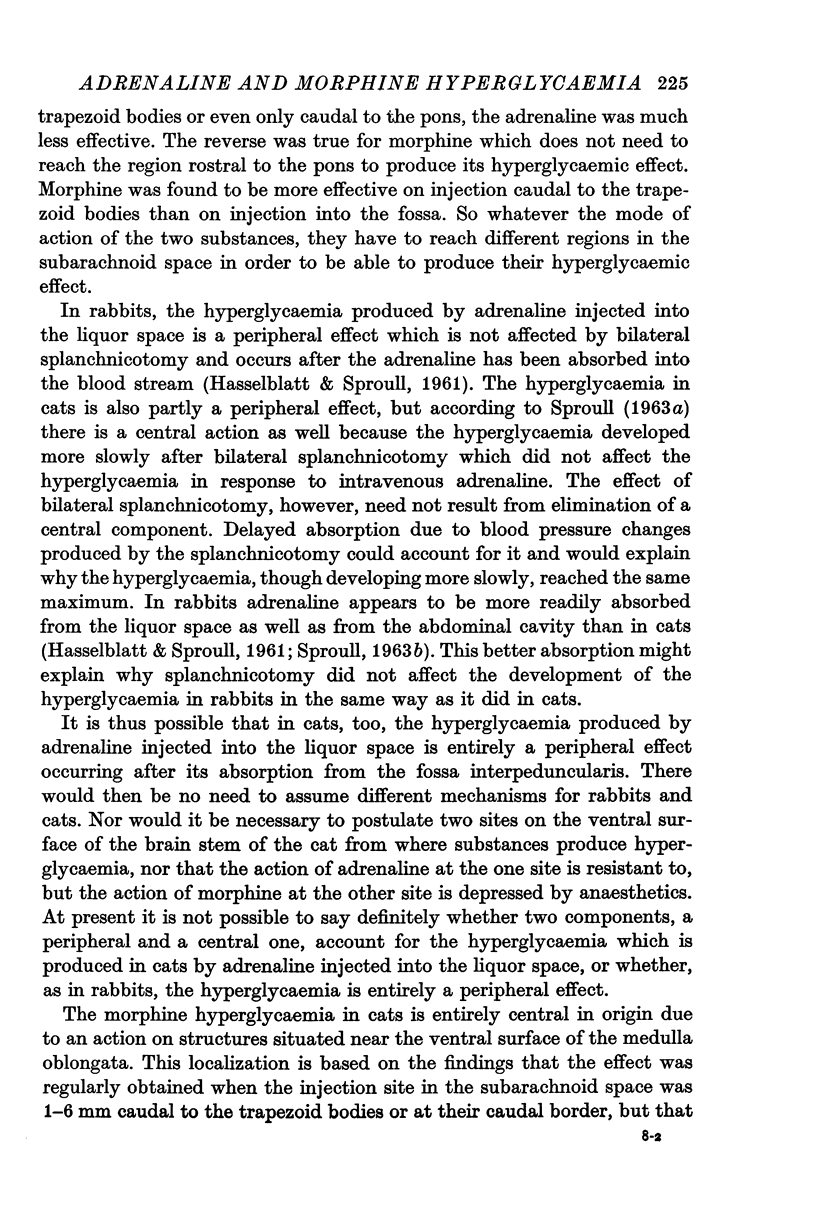
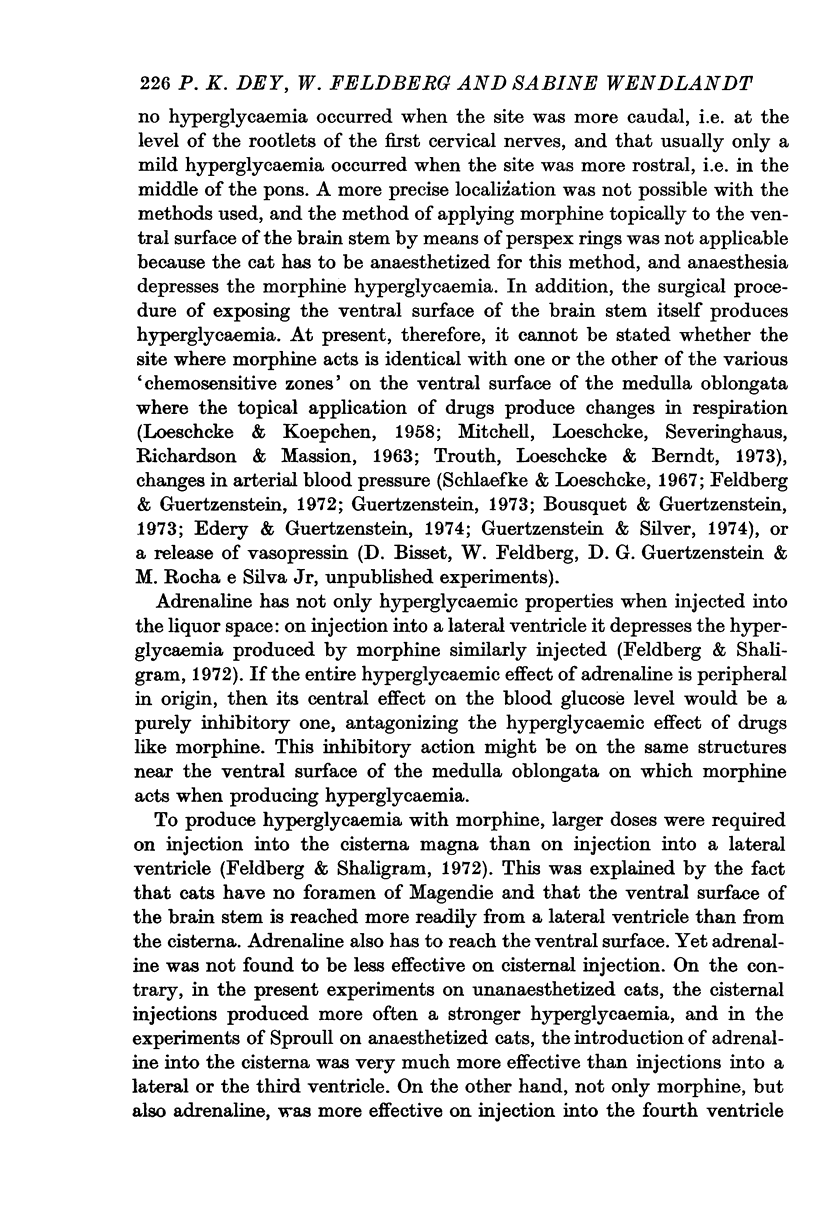


Selected References
These references are in PubMed. This may not be the complete list of references from this article.
- BORISON H. L., FISHBURN B. R., BHIDE N. K., McCARTHY L. E. Morphine-induced hyperglycemia in the cat. J Pharmacol Exp Ther. 1962 Nov;138:229–235. [PubMed] [Google Scholar]
- Bousquet P., Guertzenstein P. G. Localization of the central cardiovascular action of clonidine. Br J Pharmacol. 1973 Dec;49(4):573–579. doi: 10.1111/j.1476-5381.1973.tb08532.x. [DOI] [PMC free article] [PubMed] [Google Scholar]
- Child K. J., Currie J. P., Dis B., Dodds M. G., Pearce D. R., Twissell D. J. The pharmacological properties in animals of CT1341--a new steroid anaesthetic agent. Br J Anaesth. 1971 Jan;43(1):2–13. doi: 10.1093/bja/43.1.2-a. [DOI] [PubMed] [Google Scholar]
- Edery H., Guertzenstein P. G. A central vasodepressor effect of Dyflos. Br J Pharmacol. 1974 Apr;50(4):481–487. doi: 10.1111/j.1476-5381.1974.tb08581.x. [DOI] [PMC free article] [PubMed] [Google Scholar]
- Ermisch A., Sterba G., Hess J. Untersuchungen zur Klärung der Funktion des Reissnerschen Fadens. In-vitro-Bindung von Noradrenalin, Adranlin und Serotonin. Experientia. 1970 Dec 15;26(12):1319–1321. doi: 10.1007/BF02113003. [DOI] [PubMed] [Google Scholar]
- Feldberg W., Guertzenstein P. G. A vasodepressor effect of pentobarbitone sodium. J Physiol. 1972 Jul;224(1):83–103. doi: 10.1113/jphysiol.1972.sp009882. [DOI] [PMC free article] [PubMed] [Google Scholar]
- Feldberg W., Gupta K. P., Milton A. S., Wendlandt S. Effect of pyrogen and antipyretics on prostaglandin acitvity in cisternal c.s.f. of unanaesthetized cats. J Physiol. 1973 Oct;234(2):279–303. doi: 10.1113/jphysiol.1973.sp010346. [DOI] [PMC free article] [PubMed] [Google Scholar]
- Feldberg W., Gupta K. P. Morphine hyperglycaemia. J Physiol. 1974 May;238(3):487–502. doi: 10.1113/jphysiol.1974.sp010539. [DOI] [PMC free article] [PubMed] [Google Scholar]
- Feldberg W., Shaligram S. V. The hyperglycaemic effect of morphine. Br J Pharmacol. 1972 Dec;46(4):602–618. doi: 10.1111/j.1476-5381.1972.tb06887.x. [DOI] [PMC free article] [PubMed] [Google Scholar]
- Guertzenstein P. G. Blood pressure effects obtained by drugs applied to the ventral surface of the brain stem. J Physiol. 1973 Mar;229(2):395–408. doi: 10.1113/jphysiol.1973.sp010145. [DOI] [PMC free article] [PubMed] [Google Scholar]
- Guertzenstein P. G., Silver A. Fall in blood pressure produced from discrete regions of the ventral surface of the medulla by glycine and lesions. J Physiol. 1974 Oct;242(2):489–503. doi: 10.1113/jphysiol.1974.sp010719. [DOI] [PMC free article] [PubMed] [Google Scholar]
- HASSELBLATT A., SPROULL D. H. Hyperglycaemia induced by drugs. J Physiol. 1961 Jun;157:124–136. doi: 10.1113/jphysiol.1961.sp006710. [DOI] [PMC free article] [PubMed] [Google Scholar]
- Hess J., Hoheisel G., Sterba G. Elektronenmikroskopishcer Nachweis der Bindungsfähigkeit des Reissnerschen Fadens für Noradrenalin. J Hirnforsch. 1973;14(3):257–260. [PubMed] [Google Scholar]
- Hess J., Sterba G. Studies concerning the function of the complex subcommissural organ-liquor fibre: the binding ability of the liquor fibre to pyrocatechin derivatives and its functional aspects. Brain Res. 1973 Aug 30;58(2):303–312. doi: 10.1016/0006-8993(73)90003-6. [DOI] [PubMed] [Google Scholar]
- SPROULL D. H. HYPERGLYCAEMIA PRODUCED BY INTRACISTERNAL INJECTION OF ADRENALINE IN CATS. J Physiol. 1963 Dec;169:527–537. doi: 10.1113/jphysiol.1963.sp007277. [DOI] [PMC free article] [PubMed] [Google Scholar]
- Trouth C. O., Loeschcke H. H., Berndt J. A superficial substrate on the ventral surface of the medulla oblongata influencing respiration. Pflugers Arch. 1973 Mar 21;339(2):135–152. doi: 10.1007/BF00587180. [DOI] [PubMed] [Google Scholar]


